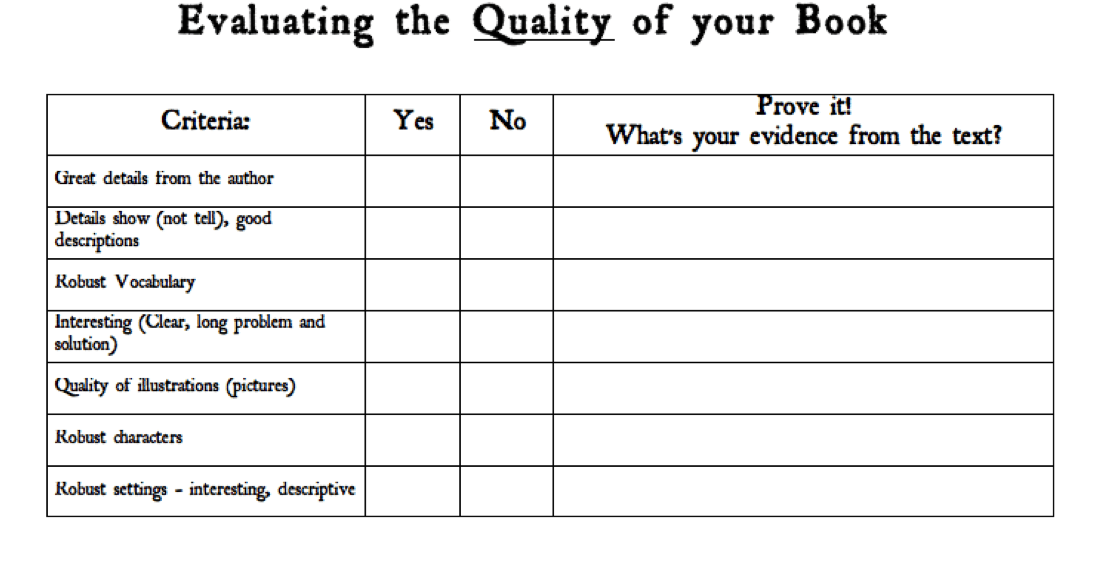Increasing Achievement with Student Created Rubrics
4 Min Read • Rubrics
Recently, my students wrapped up a fantastic arts-integrated project. They were totally engaged and learning while working through the rigorous requirements. I shared guidelines, discussed requirements, and showed completed examples while pointing out strengths and weaknesses that help in increasing achievement. There was an energy of the work sessions, new skills gained amongst them I noticed that I just loved. This was evident from my informal conversations with students, and the questions they asked during the process.
I was SO excited to see the final products emerge… until I saw the final products.
All of that vigor and this is all I’m getting?? I am all about process-based learning, but I also had had a vision in my mind of what we would be able to create, and the majority of students had not achieved my expectations. It was such a deflating feeling! Immediately, I started mulling over where it may have gone wrong. Had I not explained the project well enough? Should my examples have been more specific? Did the project design not align well enough with the standards? Or, did the students just not have enough foundational knowledge to produce at the level I was expecting?
Has this ever happened to you??
After much reflection, coinciding with a training session on our new Teacher Effectiveness Model, I was reminded of something I had done years ago when teaching elementary gifted classes: I allowed students to participate in designing the assessment. Yes, it took time, but it was well worth it to help students achieve or produce at the highest level. I believe this is the key to higher quality work because it causes students to self-monitor during the learning process. They know the expectations inside and out because they helped to write them. It is also best practice. According to Charlotte Danielson’s The Framework for Teaching (Teacher Evaluation Tool), this is the criteria a teacher needs to follow in order to achieve the highest level of ‘distinguished’:
“The plan
[for assessment] contains evidence of student contribution to its development.”
In theory, this sounds great, but how can you logistically manage it?
The first time I tried this, my Language Arts class was trying to evaluate the quality of different versions of The Nutcracker. I had a variety of books, ranging from a version I picked up at The Dollar Store to E.T.A. Hoffman’s original, and students had been reading and subsequently comparing and contrasting them. Because of their exposure to all of these versions, students knew that some of the literature was of a much higher quality than others.
To create the assessment tool that they would use, I projected the blank template of a checklist. We discussed what criteria we expected a quality piece of literature to have. Once we heard all ideas, we grouped similar or repetitive criteria and boiled it down to the checklist shown below. Before giving it to the students to use as an assessment tool, I polished it a bit, but the students took ownership of their checklist and were engaged at a deeper level during their work.
 I also used this strategy with my math class. This year, as we adopted a new curriculum,I struggled to help my students reach the level of expectation when writing explanations to math problems. After discussing and viewing examples of common mistakes and a sample lesson from our math coach, again I had students participate in a brainstorming session. They shared everything they thought was important when solving math problems. This time, however, I typed their ideas in a word document.
I also used this strategy with my math class. This year, as we adopted a new curriculum,I struggled to help my students reach the level of expectation when writing explanations to math problems. After discussing and viewing examples of common mistakes and a sample lesson from our math coach, again I had students participate in a brainstorming session. They shared everything they thought was important when solving math problems. This time, however, I typed their ideas in a word document.
How Did We Do It?
I called on each student as many times as he or she wanted to share, even if it meant repeating an idea or restating it in a slightly different way. If something came up twice, or three times, I typed it each time. Also, I added ideas, which helped to generate more thoughts from the students. After all of the ideas had been exhausted, I sorted the students’ ideas alphabetically so we could see which ideas appeared the most, similar to the idea of making a Wordle. (When making a Wordle, the more times a word is typed, the larger it appears in the final product: http://www.wordle.net/). After class, I sorted the students’ ideas into categories to create a checklist that students could use for self-assessment.
Not only did this allow students to be a part of the process, it gave us a chance to go over these expectations in multiple ways. Before turning in each test, students used the checklist to make sure they followed all of the necessary steps to be successful.
The next time student work isn’t matching your expectations, give this technique a try. The work your students produce will amaze you! And for more ideas and templates you can use in your classroom like this one, be sure to check out our online class Assessment for Makers.



